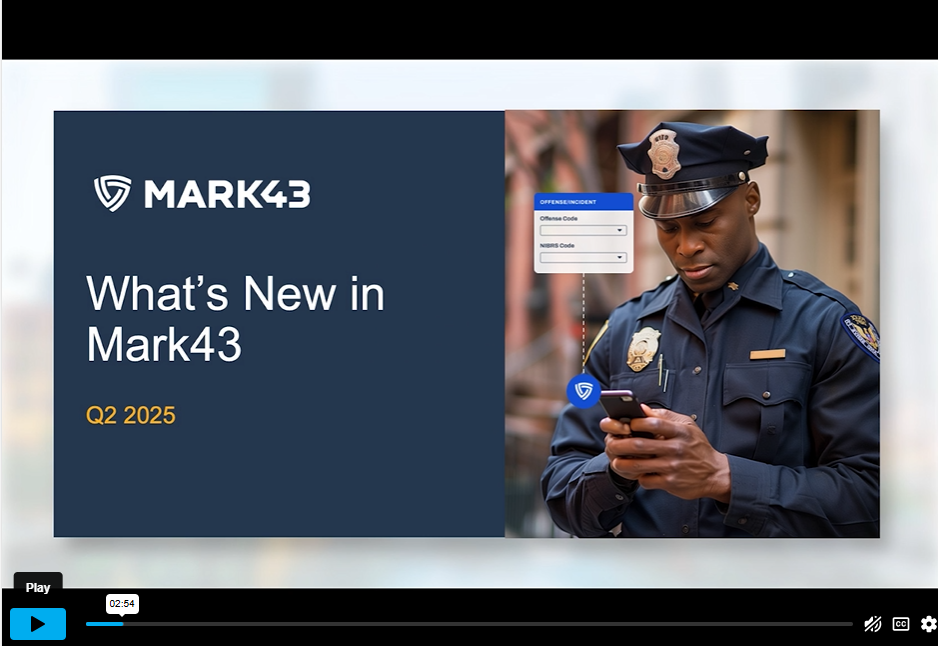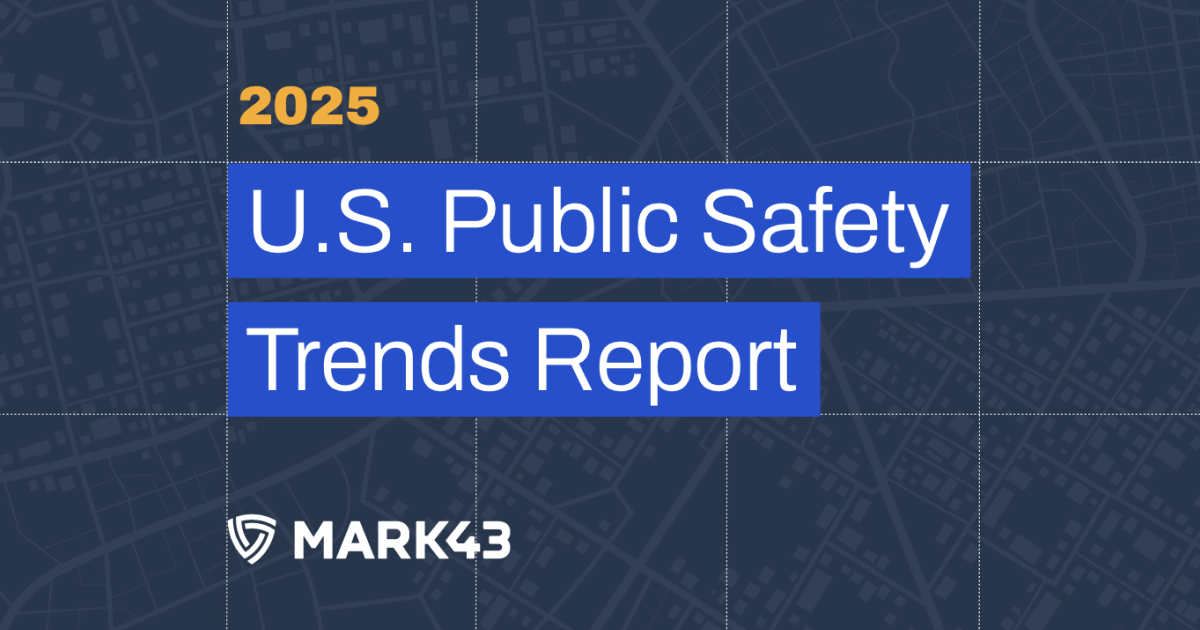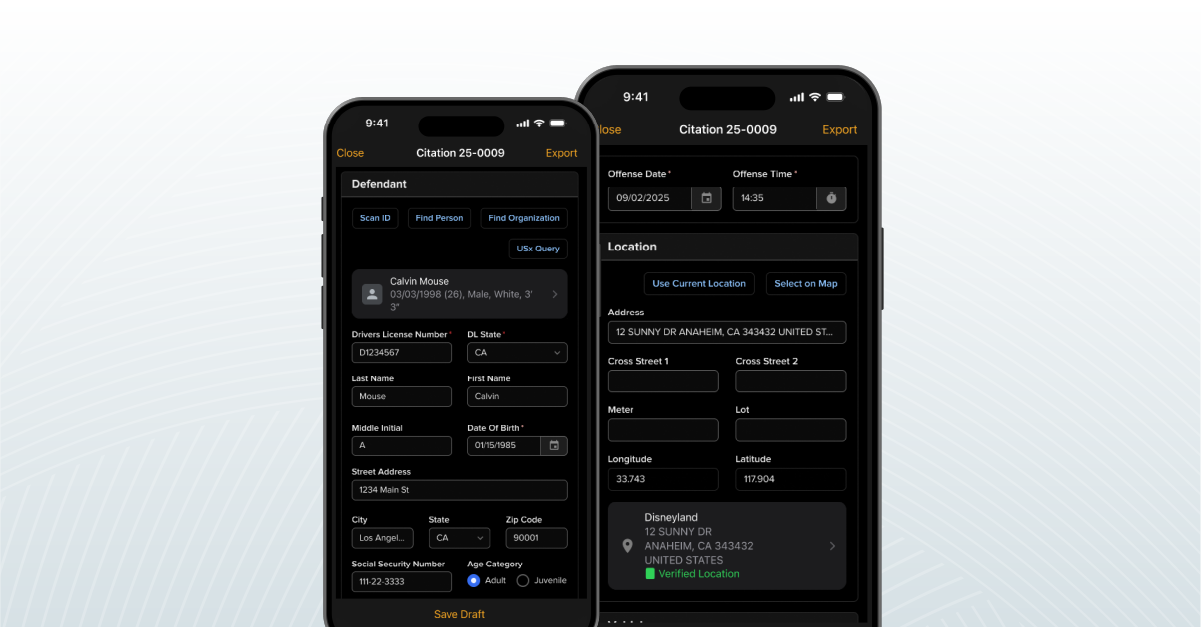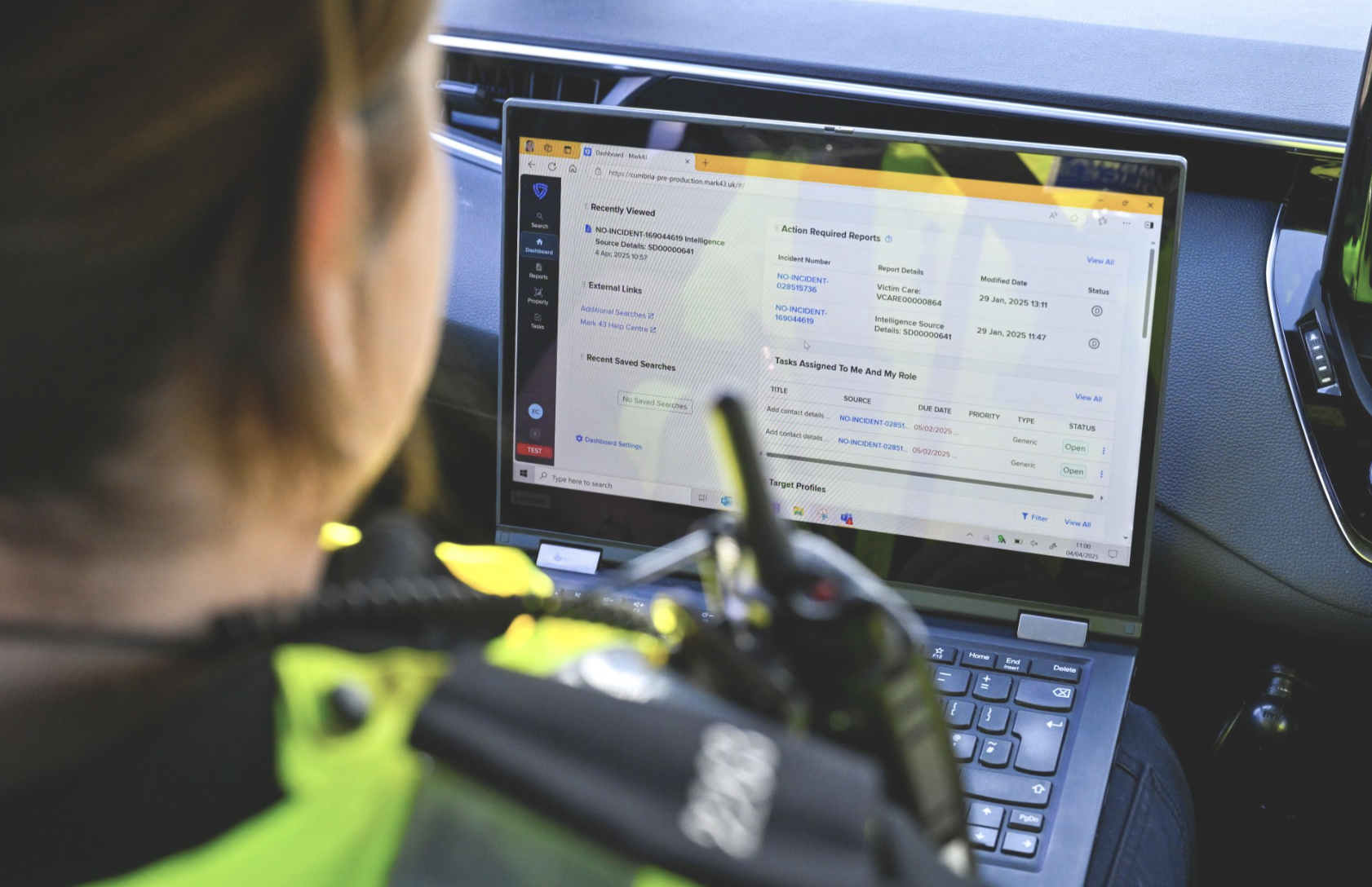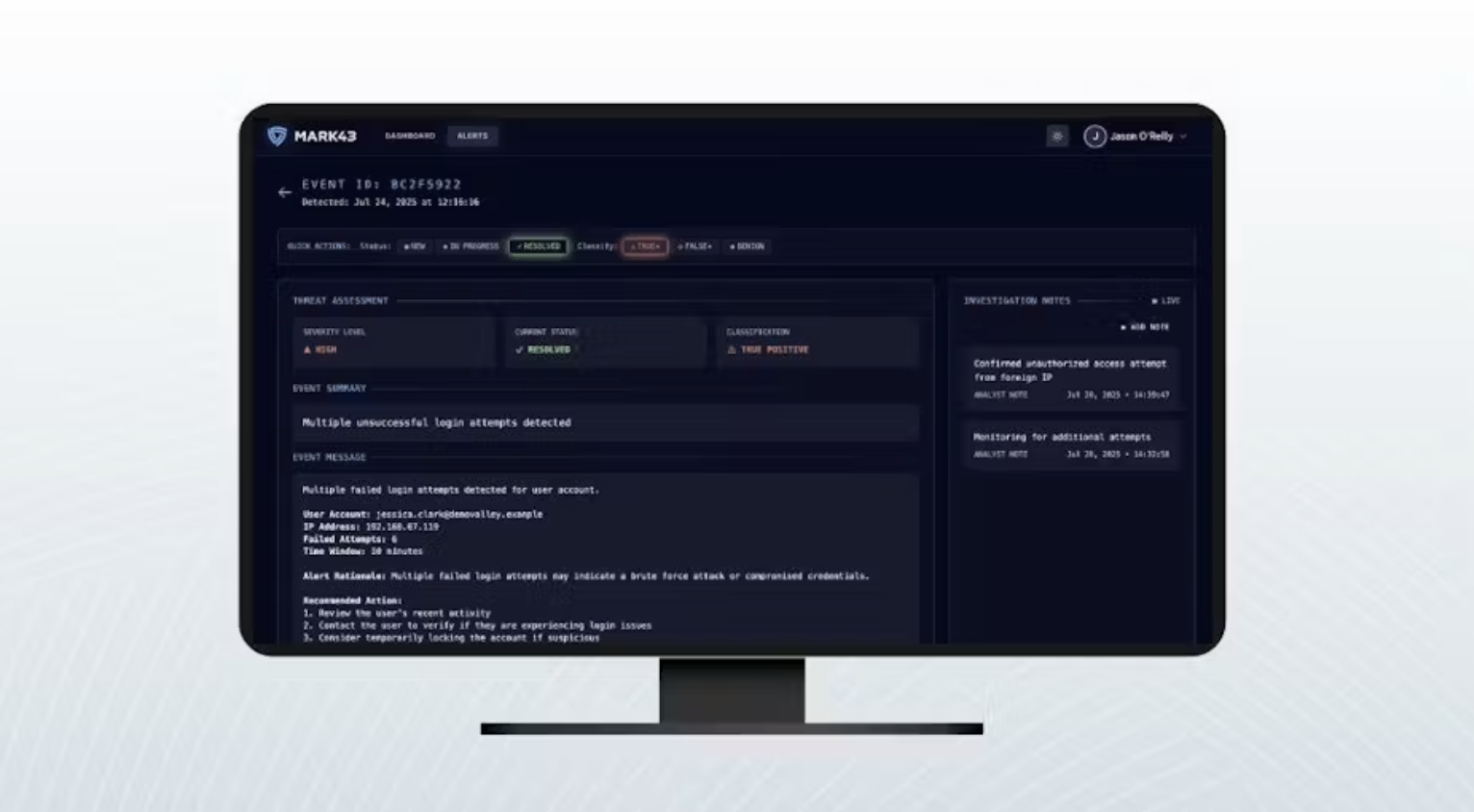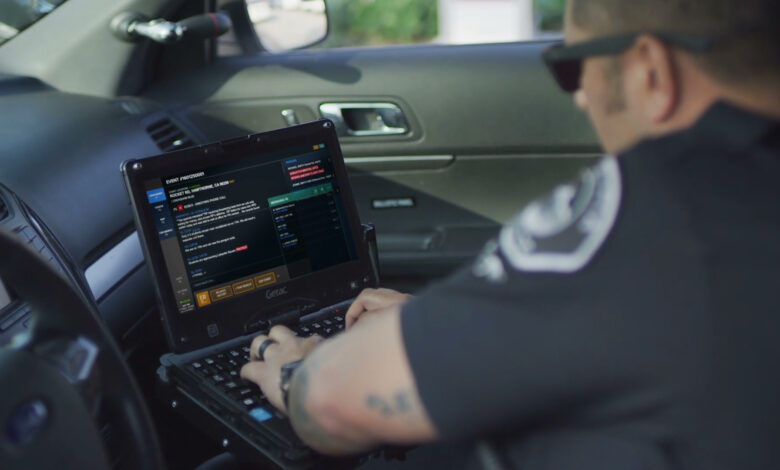
By: Wendy Gilbert, SVP of Product at Mark43
The tremendous advances of generative AI have resulted in increasing adoption across a number of sectors and use cases. One of the most impactful real-world uses of AI is in public safety. As AI adoption in public safety continues to emerge and expand rapidly, this is an especially exciting time to explore how it’s enhancing a faster, smarter, and safer public safety system.
A recent study revealed that 87% of law enforcement believe that AI is transforming their industry for the better, and 65% of law enforcement believe that AI will help them be more productive and efficient. And many are already using it every day in their jobs—70% of law enforcement stated AI has already helped them be more efficient within their role. With its ability to enhance speed, accuracy, and decision-making, AI presents transformative possibilities for public safety officials. It can also serve as a powerful force multiplier, helping agencies overcome challenges like understaffing and resource constraints.
Public safety agencies face numerous challenges that AI can address in a safe and cost-effective manner. Many agencies are trying to manage a mountain of time-consuming administrative and clerical tasks, which take time away from the critical work of spending time on the street and interacting directly with the public. For report writing, AI helps officers with identifying key facts and points to be included, structuring narratives, preparing drafts and creating summaries. In addition, AI can include key data points in the correct spots — without officers having to manually search, find and enter them.
Data management
Data management is increasingly critical for public safety agencies due to the growing volume and complexity of data that they collect. Agencies need to manage this data accurately and securely to support quick responses and strong decision-making. Some critical areas of data management include entity matching, resolution and deduplication – which ensure that an agency’s system can accurately identify matches for people, locations, vehicles and properties.
Matching algorithms can make recommendations to records personnel to resolve or merge records. This staff previously would have gone through a time-consuming and manual process to review the data and do this work. This AI use has clear benefits for informing the emergency response and solving crime. It also helps agencies dealing with understaffing who are trying to manage a large volume of data.
Case investigation
Case investigation faces specific challenges with vast amounts of digital data. Investigators and sergeants responsible for making a case typically need to quickly and efficiently read and analyze a broad and deep amount of information for a case, such as the 911 call, CAD data, interviews, reports, phone records, emails, public records, video and social media. This data can often be scattered and fragmented across different locations and in varied formats.
To assist, AI analyzes a range of data and summarizes key events and facts that are most relevant to a case. This can streamline investigators’ workflow, move investigations forward faster and speed the assigning of cases with a clear overview of critical details, while also enabling investigators to quickly dive deeper as needed.
CAD
For computer-aided dispatch (CAD), 911 call handling and CAD event management, agencies face a large volume of calls as well as the need to process a growing amount of data while also responding quickly to the public. Speed is one of the major strengths of AI, and AI can have a major impact by triaging non-emergency calls. Many agencies have a telephone line for non-emergency calls — such as a 311. AI ensures that information is transcribed, key details are identified and that calls are streamlined if the caller needs immediate assistance for an emergency and that relevant information is available for agencies to respond quickly.
As a result of this use of AI in administration, data management, investigations and call handling, agencies can better manage their workflow while addressing the issue of understaffing. AI acts as a force multiplier so agencies can do more with less and be as productive and accurate as possible with their existing resources.
Guardrails
Of course, adopting AI needs to be done responsibly and safely. To do this, agencies should adopt clear policies so that employees understand what they can and can’t do with AI on their own, as individuals and as employees — as well as when to include data in AI systems and when to keep it out. For example, sensitive data that shouldn’t be included should be handled appropriately.
A good way to start with AI is a lower-risk approach, for example, by using factual data that already exists and using AI to summarize events, reports and cases to inform action plans and investigations. Humans should be involved in any decision — so that you always have a human in the loop and AI is at most suggesting, rather than making critical decisions.
Conclusion
The future of AI in public safety is unknown—and that’s what’s thrilling. So much of what can slow public safety and law enforcement agencies down is often just having the manpower available to do it. But AI offers safe, responsible ways for public safety agencies to maximize their productivity, while providing informed analysis and data to make the best decisions. There has been much discussion in the technology industry about AI agents and what they will do, but in public safety, AI agents offer real-world impact.
AI agents will work in the background to surface important information to help officers do their jobs better, which will make communities safer. Just as AI has made a major impact on the consumer market with ChatGPT and other products, its potential to transform public safety is limitless. We all want safer communities. Leveraging technology is one of the fastest ways to help us get there.
Original Story: https://aijourn.com/from-response-to-reports-how-ai-is-reshaping-public-safety-operations/



